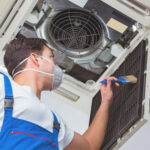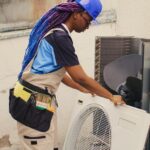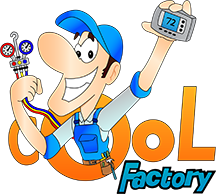
Tips for Lowering Your Heating Costs
Tips for Lowering Your Heating Costs
Heating your home efficiently can be a major challenge, especially during the colder months when energy bills skyrocket. Whether you’re dealing with chilly winters or just trying to trim down your utility expenses, finding ways to lower your heating costs is a smart move. Fortunately, there are numerous strategies and tips you can employ to keep your home warm and cozy without breaking the bank. In this article, we’ll explore some effective methods to help you reduce your heating expenses while maintaining comfort and warmth throughout the season.
Understanding Heating Efficiency
Heating efficiency refers to how effectively your heating system converts energy into heat. A higher efficiency system will produce more heat with less energy, resulting in lower utility bills. Factors such as the age and condition of your system, insulation levels, and even the layout of your home can impact efficiency.
By understanding these factors, you can make informed decisions about upgrades and maintenance to maximize efficiency and minimize costs. Regular maintenance, proper insulation, and investing in energy-efficient appliances are all ways to improve heating efficiency and save money in the long run.
Importance of Lowering Heating Costs
Lowering heating costs is essential for several reasons. Firstly, it helps to reduce your overall utility expenses, freeing up funds for other necessities or luxuries. Additionally, lowering heating costs contributes to environmental conservation by reducing energy consumption and greenhouse gas emissions associated with heating.
Moreover, efficient heating can improve indoor comfort and air quality, creating a healthier living environment for you and your family. By implementing cost-saving measures, you not only save money but also contribute to a more sustainable future and enjoy the immediate benefits of a warm, cozy home during the colder months.
Seasonal Challenges and Solutions
Seasonal changes present unique challenges for maintaining a comfortable indoor temperature while keeping heating costs manageable. During the colder months, battling against plummeting temperatures can strain heating systems and lead to higher energy consumption. Conversely, in warmer seasons, fluctuating temperatures may tempt homeowners to crank up the air conditioning, resulting in increased utility bills.
To combat these challenges, homeowners can employ various strategies such as adjusting thermostat settings seasonally, utilizing natural ventilation to regulate indoor temperature, and investing in energy-efficient windows and insulation. By understanding and proactively addressing seasonal challenges, homeowners can optimize comfort and minimize heating expenses year-round.
Key Strategies for Saving on Heating Bills
Saving on heating bills requires a multifaceted approach that addresses both short-term adjustments and long-term investments. One key strategy is to optimize the use of programmable thermostats, allowing for precise temperature control and energy conservation based on occupancy patterns. Additionally, upgrading to energy-efficient heating systems, such as furnaces or heat pumps, can significantly reduce energy consumption and long-term costs.
Proper insulation and weatherization techniques, such as sealing air leaks and insulating ducts, are also crucial for minimizing heat loss and improving heating efficiency. By combining these strategies with smart habits like regular maintenance and mindful energy use, homeowners can achieve substantial savings on their heating bills while maintaining comfort and warmth throughout the colder months.
Efficient Heating Systems: What to Consider
When selecting a heating system for your home, several factors should be considered to ensure optimal efficiency and cost-effectiveness. Firstly, evaluate the energy efficiency rating of different heating options, such as furnaces, boilers, or heat pumps, to determine their long-term operating costs. Additionally, consider the size and layout of your home, as well as local climate conditions, to choose a system that can adequately heat your space without unnecessary energy waste.
Investigate available incentives or rebates for energy-efficient heating systems, which can offset upfront costs and enhance affordability. Lastly, consult with HVAC professionals to assess installation requirements and ongoing maintenance needs to maximize the efficiency and lifespan of your chosen heating system.
Maximizing Insulation for Energy Savings
Insulation plays a crucial role in maintaining a comfortable indoor temperature and minimizing heating costs by reducing heat transfer between indoor and outdoor environments. To maximize energy savings, prioritize insulation upgrades in key areas of your home, such as attics, walls, and floors, where significant heat loss commonly occurs. Choose insulation materials with high R-values and consider factors such as moisture resistance and fire safety when selecting insulation products.
Seal air leaks and gaps in walls, windows, and doors to prevent drafts and improve insulation effectiveness. Additionally, ensure proper ventilation to prevent moisture buildup and mold growth while optimizing indoor air quality. By prioritizing insulation upgrades and addressing air leaks, homeowners can achieve substantial energy savings and enhance the overall comfort and efficiency of their homes.
Harnessing Natural Heat Sources
Utilizing natural heat sources can significantly reduce the need for mechanical heating systems and lower energy bills. Passive solar heating, for example, involves designing homes to maximize solar gain during the winter months through features such as south-facing windows, thermal mass, and overhangs to regulate sunlight exposure. Strategic landscaping with deciduous trees can provide shade in the summer while allowing sunlight to penetrate during the winter.
Additionally, utilizing thermal mass materials like concrete or stone can absorb and store heat during the day, releasing it gradually at night to maintain comfortable indoor temperatures. By harnessing natural heat sources, homeowners can reduce reliance on traditional heating systems and achieve energy savings while enhancing indoor comfort.
Programmable Thermostats: Your Energy-Saving Ally
Programmable thermostats are a simple yet powerful tool for enhancing heating efficiency and cutting energy costs. By aligning temperature settings with your daily routine, these devices automatically adjust temperatures during periods of inactivity or when you’re away, minimizing unnecessary energy consumption. Some advanced models feature zoning capabilities, adaptive learning algorithms, and smartphone app compatibility for added convenience and control.
Additionally, programmable thermostats provide valuable insights into energy usage patterns, empowering homeowners to make informed decisions for further efficiency improvements. With programmable thermostats as your energy-saving allies, you can enjoy increased comfort and significant savings on your heating bills.
Draft-Proofing Your Home: Essential Tips
Draft-proofing your home is a crucial step in minimizing heat loss and maximizing energy efficiency. Start by identifying and sealing air leaks around windows, doors, electrical outlets, and vents using weatherstripping, caulking, or foam insulation. Install door sweeps to block drafts at the bottom of exterior doors and consider adding insulated curtains or window films to further reduce heat transfer.
Additionally, inspect and insulate attic hatches, crawl space entrances, and ductwork to prevent cold air infiltration. By implementing these essential draft-proofing tips, homeowners can create a more comfortable and energy-efficient indoor environment while lowering heating costs.
Energy-Efficient Windows and Doors
Investing in energy-efficient windows and doors is a smart strategy for improving home insulation and reducing heating costs. Energy-efficient windows are typically double or triple glazed with low-emissivity coatings and insulated frames to minimize heat transfer and drafts. Similarly, energy-efficient doors feature insulated cores and tight weatherstripping to prevent air leakage.
Look for products with certification and consider additional features like argon gas fillings and warm-edge spacers for enhanced thermal performance. While upfront costs may be higher, the long-term energy savings and improved comfort make energy-efficient windows and doors a worthwhile investment for any homeowner looking to lower heating expenses.
Heating Maintenance: Why It Matters
Regular heating maintenance is essential for ensuring the efficient operation and longevity of your heating system. Neglecting maintenance tasks can lead to reduced performance, increased energy consumption, and costly repairs or replacements. Routine maintenance, including cleaning or replacing air filters, inspecting and lubricating moving parts, and checking for leaks or corrosion, helps to optimize heating efficiency and prevent potential breakdowns.
Moreover, professional inspections and tune-ups can identify minor issues before they escalate into major problems, saving you time, money, and hassle in the long run. By prioritizing heating maintenance, homeowners can enjoy reliable performance, lower energy bills, and extended equipment lifespan.
Heating Upgrades for Savings
Investing in heating upgrades can yield substantial savings on energy bills while enhancing home comfort and efficiency. Consider upgrading to high-efficiency heating systems, such as condensing furnaces or heat pumps, which utilize advanced technologies to minimize energy consumption and reduce operating costs.
Additionally, explore options for zone heating or ductless mini-split systems to provide targeted heating where it’s needed most, reducing energy waste in unused spaces. Upgrading insulation, sealing ductwork, and installing programmable thermostats are also effective ways to optimize heating efficiency and maximize savings. By strategically investing in heating upgrades, homeowners can enjoy long-term energy savings and a more comfortable living environment.
Smart Habits for Conserving Heat
Adopting smart habits can help homeowners conserve heat and reduce heating costs without sacrificing comfort. Start by setting your thermostat to the lowest comfortable temperature and wearing layered clothing to stay warm indoors during colder months. Take advantage of natural sunlight by opening curtains or blinds during the day to allow solar heat to warm your home, then close them at night to retain heat.
Use ceiling fans on low speed to circulate warm air throughout the room and consider installing a programmable thermostat to automatically adjust temperatures based on your schedule. By incorporating these smart habits into your daily routine, you can effectively conserve heat and lower your heating bills while maintaining a cozy indoor environment.
The art of lowering your heating costs is not only about saving money but also about promoting sustainability and comfort within your home. By implementing the tips discussed in this article, you can achieve significant savings on your heating bills while reducing your environmental footprint.
Remember, every small change adds up to make a big difference. If you’re ready to take control of your heating expenses and enjoy a more energy-efficient home, contact Cool Factory, Inc. Our team in Sterling, VA, is here to help you with expert advice, efficient heating solutions, and personalized assistance. Reach out to us at (703) 713-5113 today.






